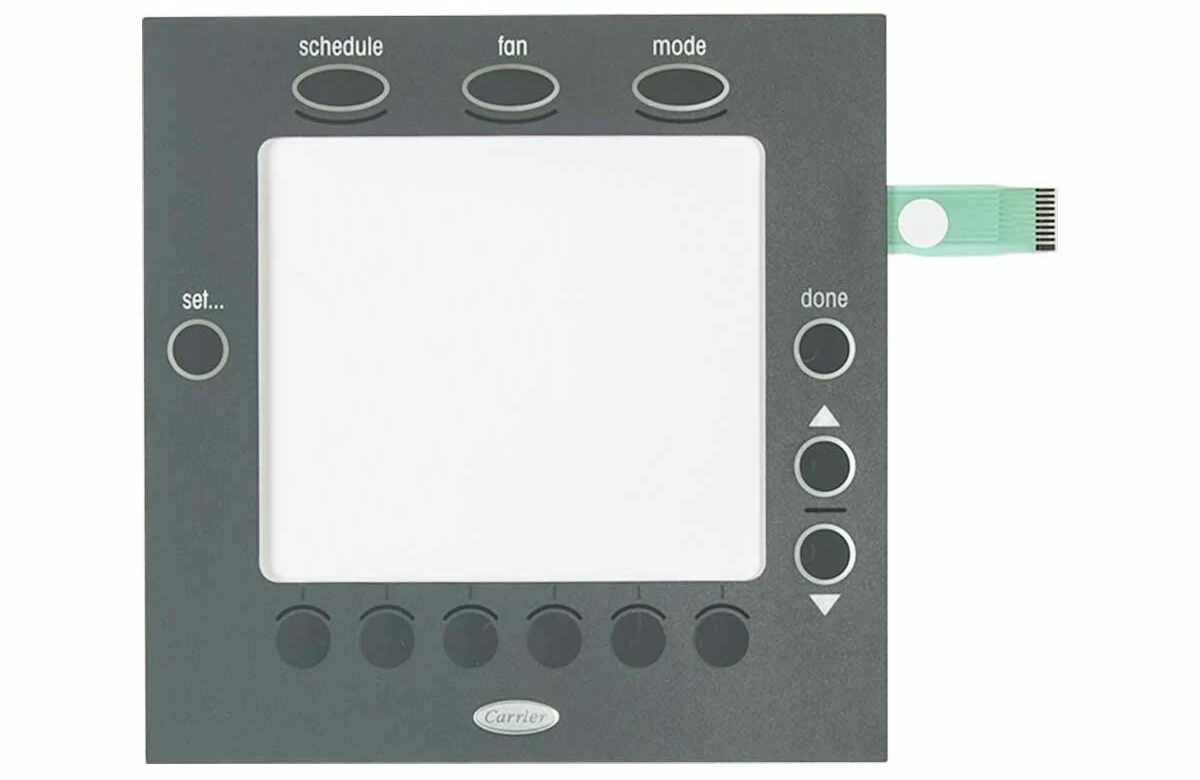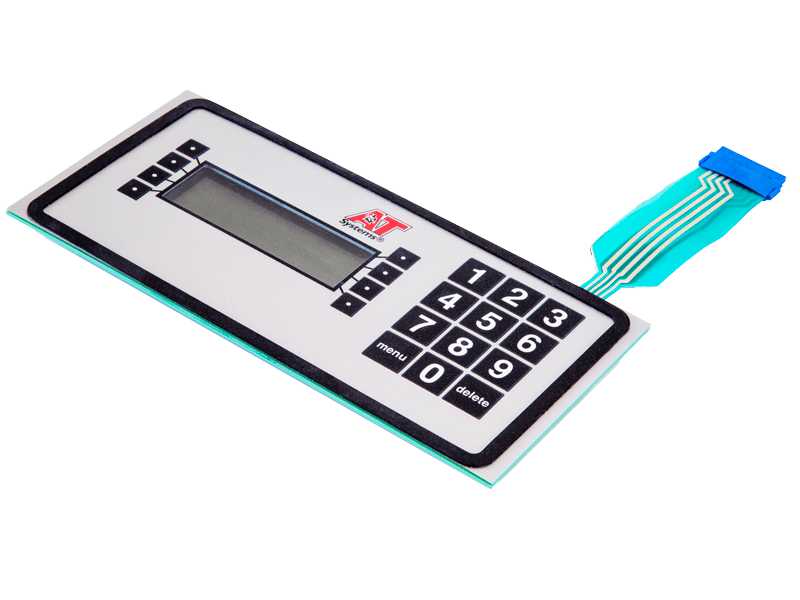Recognizing the Significance of Membrane Switch in Modern Electronics and Their Applications
Membrane switches over function as a vital element in contemporary electronics, supplying an effective user interface for customer interaction. Their lightweight and personalized nature makes them suitable for a series of applications across varied markets. Comprehending their crucial elements and benefits can give insights into their expanding relevance. As modern technology proceeds to advance, the advancement of Membrane switches questions concerning their future applications and style advancements. What exists ahead in this vibrant field?

What Are Membrane Switches?
Membrane switches are crucial parts in contemporary electronics, working as user interfaces that assist in interaction in between individuals and gadgets. These buttons consist of a number of layers, including a visuals overlay, a glue layer, and a circuit layer, all of which collaborate to develop a useful and resilient interface. The style enables a flat, low-profile service that can be customized regarding dimension, shape, and visual look, making them ideal for various applications, from customer electronic devices to medical devices. The responsive responses supplied by Membrane switches over enhances customer experience, while their resistance to dirt and wetness makes them optimal for testing environments. Furthermore, Membrane buttons can incorporate features such as backlighting and published graphics, additionally broadening their functionality. Their versatility and toughness make them a recommended selection in markets where integrity and ease of use are vital, eventually adding to the smooth procedure of contemporary electronic devices.
Key Elements of Membrane Switches Over
While various elements contribute to the capability of a membrane switch, 3 key layers play significant duties in its style and procedure. The leading layer, commonly made from a sturdy polymer, acts as the interface for customer interaction, typically featuring published graphics and symbols. Under this is the spacer layer, which preserves the required distance between the leading layer and the circuit layer. This spacer layer assurances that the button turns on just when pushed, stopping unexpected inputs. Finally, the circuit layer contains conductive traces that complete the electrical circuit when the top layer is dispirited. These traces can be made from various products, consisting of copper or silver. Together, these components produce a durable and reliable gadget that is compact and versatile, ideal for a vast array of digital applications, from home devices to clinical gadgets. Recognizing these crucial components is crucial for appreciating the total performance of Membrane switches.
Advantages of Making Use Of Membrane Changes

Membrane Switch Production Refine
Recognizing the Membrane button manufacturing process reveals the elaborate actions associated with producing these vital parts. The process normally starts with the style phase, where formats and specifications are developed utilizing specialized software. Following this, the visuals overlay is printed on an adaptable substratum, commonly using high-resolution printing techniques to ensure clearness and precision.Next, the glue layers are applied, which offer to bond the various parts together. The circuit layers, made from conductive inks or products, are after that published onto a different substrate. These layers are thoroughly lined up and laminated flooring to produce a useful switch.After assembly, the buttons undergo evaluating to verify functionality and longevity. Quality control procedures are executed throughout the procedure to determine and correct any kind of flaws. The finished Membrane switches are packaged and prepared for distribution, prepared to satisfy the demands of contemporary electronic applications.
Applications of Membrane Switches Over in Numerous Industries
Membrane switches are progressively utilized across numerous industries, particularly in clinical equipment and consumer electronics. In the clinical field, they give trusted control interfaces for devices that call for specific procedure. In consumer electronic devices, these switches improve individual interaction by providing streamlined and responsive user interfaces. Receptive Medical Devices Control
Countless modern-day medical gadgets make use of Membrane switches for structured procedure and enhanced customer communication. These switches supply a trusted, durable user interface for a variety of applications, consisting of diagnostic devices, client monitoring systems, and surgical tools. Their customizable designs enable particular layouts that can fit the one-of-a-kind demands of health care experts, making certain intuitive navigating and effective accessibility to crucial functions. Additionally, Membrane buttons are resistant to contaminants, making them ideal for sterile atmospheres. The responsive feedback they supply can enhance user confidence, decreasing the threat of mistakes during essential medical treatments. Generally, the combination of Membrane buttons in medical tools considerably adds to enhanced operational efficiency and client safety and security in medical care setups.
Customer Electronics Interfaces
In the domain of customer electronic devices, Membrane buttons play an important role in improving interface across a wide variety of devices. These buttons are indispensable to items such as remote controls, microwaves, Source and gaming consoles, supplying a efficient and easy to use interface. Their layout permits a seamless assimilation of graphics and performance, allowing suppliers to develop smooth, modern visual appeals without compromising functionality. Membrane switches are additionally known for their resilience, frequently withstanding considerable use and exposure to various environmental problems. Furthermore, they can incorporate functions like backlighting and tactile comments, additional improving the user experience. As customer demands for innovative yet instinctive user interfaces expand, Membrane changes proceed to be a vital component beforehand digital tool capability.
Layout Factors To Consider for Membrane Switches
Designing effective Membrane switches requires careful interest to different variables that affect both capability and individual experience. One vital factor to consider is the selection of materials, as they can influence durability, responsive comments, and visual allure. Picking an appropriate adhesive is necessary for assuring lasting attachment and resistance to ecological factors.In addition, the design and layout of the button should fit individual communication, with switch sizes and spacing optimized for convenience of use. The incorporation of graphics and labeling must prioritize clearness and visibility under different illumination internet conditions.Consideration of electric characteristics, such as actuation force and switch sensitivity, will certainly enhance the responsiveness of the Membrane button. In addition, the layout needs to suit producing procedures to guarantee cost-effectiveness and prompt production. On the whole, a well-balanced layout enhances both the performance and the customer experience of Membrane buttons in modern-day electronics.

Future Patterns in Membrane Switch Innovation
As technology remains to advance, Membrane buttons are poised to incorporate new improvements that will certainly improve their capability and application in numerous areas. One substantial trend is the unification of adaptable and resilient products, which will certainly enhance the life-span and integrity of these switches. Improved surface appearances and personalized graphics are likewise prepared for, enabling even more instinctive individual interfaces.Moreover, the combination of smart technology, such as touch-sensitive surface areas and haptic comments, is expected to enhance individual communication, making Membrane changes a lot more appealing and responsive. Furthermore, developments in published electronics will make it possible for much more intricate circuitry within thinner profiles, further expanding design possibilities.Sustainability will certainly likewise play an important function in future growths, as manufacturers discover eco-friendly materials and production procedures. this Generally, these patterns will certainly ensure that Membrane changes stay important and pertinent in a progressively electronic and interconnected world.
Frequently Asked Inquiries
Exactly How Do Membrane Changes Compare to Conventional Mechanical Switches?
Membrane switches over deal advantages over typical mechanical buttons, including minimized size, lighter weight, and enhanced sturdiness. They usually give a secured surface area, improving resistance to dirt and wetness, making them suitable for diverse applications.
What Products Are Frequently Made Use Of in Membrane Switch Construction?

Can Membrane Switches Withstand Extreme Environmental Issues?
Membrane switches can stand up to extreme ecological conditions, relying on their layout and products. High-grade buildings often include durability against temperature variations, humidity, and exposure to chemicals, making them suitable for different requiring applications throughout industries.
The Length Of Time Do Membrane Switches Over Usually Last Before Failure?
Membrane switches commonly display a lifespan varying from 1 to 10 million actuations, depending upon factors such as use frequency, environmental conditions, and manufacturing high quality. Regular maintenance can extend their sturdiness and operational integrity considerably.
Are Membrane Switches Customizable for Particular Applications?
Membrane buttons are undoubtedly adjustable for specific applications. They can be customized in style, dimension, and functionality, allowing manufacturers to satisfy distinct user requirements and enhance product aesthetic appeals while maintaining functional performance and durability. Membrane buttons are vital components in modern electronic devices, offering as user interfaces that help with communication in between users and devices. The tactile feedback supplied by Membrane switches over boosts customer experience, while their resistance to dirt and wetness makes them perfect for challenging atmospheres. The consolidation of graphics and labeling must prioritize clarity and visibility under different illumination conditions.Consideration of electrical characteristics, such as actuation force and switch level of sensitivity, will improve the responsiveness of the Membrane switch. Enhanced surface textures and customizable graphics are likewise prepared for, permitting for more user-friendly individual interfaces.Moreover, the combination of smart innovation, such as touch-sensitive surface areas and haptic comments, is anticipated to boost user interaction, making Membrane changes more responsive and appealing. Membrane changes deal benefits over traditional mechanical switches, including reduced size, lighter weight, and boosted durability.